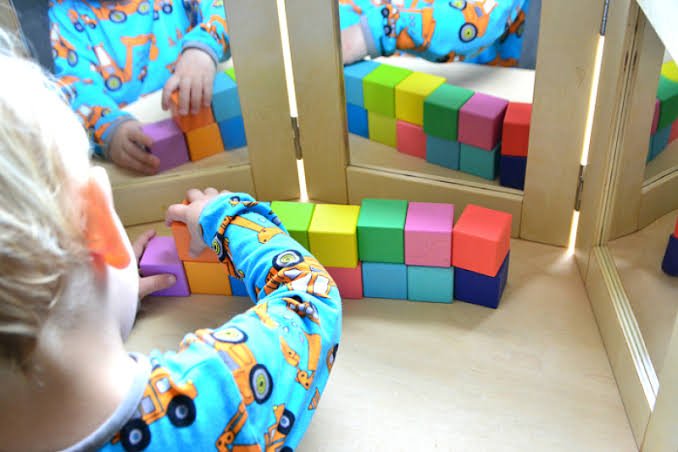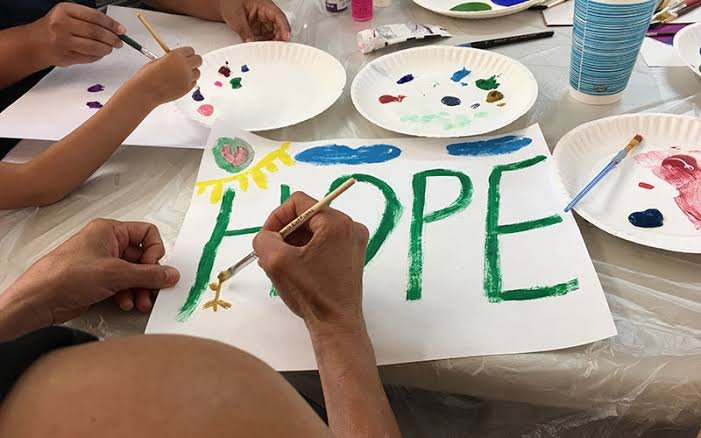Mastering the Button: A Journey in Self-Modeling

Teaching my son how to button his shirts was one of those parenting challenges that tested both patience and creativity. Like many children with special needs, he faced difficulties in mastering this seemingly simple task. As a parent determined to equip him with essential life skills, I turned to video modeling—a method I have proven for its effectiveness in teaching children with learning difficulties. We watched videos together, featuring children his age successfully buttoning shirts. But despite the effort, his progress was minimal. He would try to imitate what he saw on the screen, but the concept seemed lost when he attempted to mirror the actions directly from the opposite position of the model. While video modeling is an excellent tool, it became clear that something more was needed to help him fully grasp the concept. Realizing this, I decided to change my approach. Instead of relying solely on the video, I decided to become the model myself. I put on a shirt and had him stand opposite me. Then, I stood beside him and repeated the process, allowing him to observe from different angles. Finally, I had him carry out the task himself, in front of a mirror. The results were almost immediate. My son quickly learned to button his shirt, perfecting the act with surprising ease. What is Self-Modeling? Self-modeling is a powerful tool used in various therapeutic and educational settings to teach and reinforce specific skills by having individuals observe themselves successfully performing the desired behavior. Unlike traditional modeling, where an external model (such as another person or a video) demonstrates the behavior, self-modeling focuses on the individual’s own actions. This method is especially effective for children with special needs because it reinforces their ability to achieve a task by watching themselves do it. There are several forms of self-modeling, each with its unique applications and benefits: The Benefits of Self-Modeling Self-modeling offers numerous benefits, particularly for children with special needs. It leverages the child’s familiarity with their own movements and cognitive patterns, making it easier to internalize and replicate the desired behaviors. Here are some of the key benefits: Implementing Self-Modeling To effectively use self-modeling as a learning tool, here are some action points: Teaching life skills to children with special needs requires a combination of patience, creativity, and the right strategies. While video modeling is a powerful tool, incorporating self-modeling can significantly enhance the learning experience. By allowing children to observe themselves successfully completing tasks, we can boost their confidence, reduce anxiety, and foster a sense of independence. As my own experience with my son has shown, sometimes, the key to unlocking a child’s potential lies in letting them see the success within themselves.
The Beauty of Video Modeling: How Rasheeda Found Hope for Her Son

Rasheeda was a devoted mother of a preadolescent son, Raymond, who had autism. Despite her unwavering love and dedication, she often felt overwhelmed and helpless. Raymond struggled with everyday tasks, and one of the most challenging hurdles was potty training. Rasheeda had tried numerous methods, but nothing seemed to work. One day, while browsing online, she came across a story about the Seizure Support Foundation (SSF) and their incredible work with children who have neurological disorders. Intrigued and hopeful, Rasheeda decided to reach out to SSF for help. When Rasheeda contacted SSF, she was introduced to the concept of video modeling. SSF explained that video modeling involves using videos that demonstrate specific behaviors or skills, allowing children to learn by watching and imitating. They assured her that this method had shown promising results, especially for children with learning disabilities. Rasheeda was skeptical but willing to try anything that might help Raymond. SSF advised Rasheeda on a selection of culturally relevant videos specifically designed for potty training. They included familiar accents, settings, and models who are of Raymond’s age bracket, making it easier for him to relate to and understand the content. Along with the videos, SSF gave Rasheeda detailed instructions on how frequently Raymond should watch the videos and how to reinforce the lessons at home. Rasheeda followed the instructions diligently. Every day, she sat with Raymond and watched the videos, patiently guiding him through the steps. The videos broke down the process of using the restroom into simple, manageable steps, demonstrating each one clearly. To her surprise, Raymond showed interest and began to mimic the actions he saw on the screen. As days turned into weeks, Rasheeda noticed subtle changes in Raymond’s behavior. He was more attentive and seemed to understand what he was supposed to do. One morning, just a month after they started the video modeling program, Rasheeda witnessed a moment she had longed for. Raymond, without any prompting, walked to the restroom and used it all by himself, just like he had seen in the videos. Rasheeda’s heart swelled with pride and joy. She could hardly contain her excitement and immediately called SSF to share the incredible news. Rasheeda’s story is a testament to the beauty and effectiveness of video modeling, especially when the content is culturally appealing and relatable. Here are some of the key benefits of video modeling: Rasheeda’s experience with video modeling not only transformed her son’s life but also gave her hope and confidence in her ability to support Raymond’s growth. The success of culturally relevant video modeling programs like those provided by SSF demonstrates the powerful impact this approach can have on children with learning disabilities. If you know a child who could benefit from video modeling, or if you’re inspired to support this transformative approach, reach out to the Seizure Support Foundation today. Together, we can help more children like Raymond achieve their full potential and lead happier, more independent lives. Join us in making a difference!
